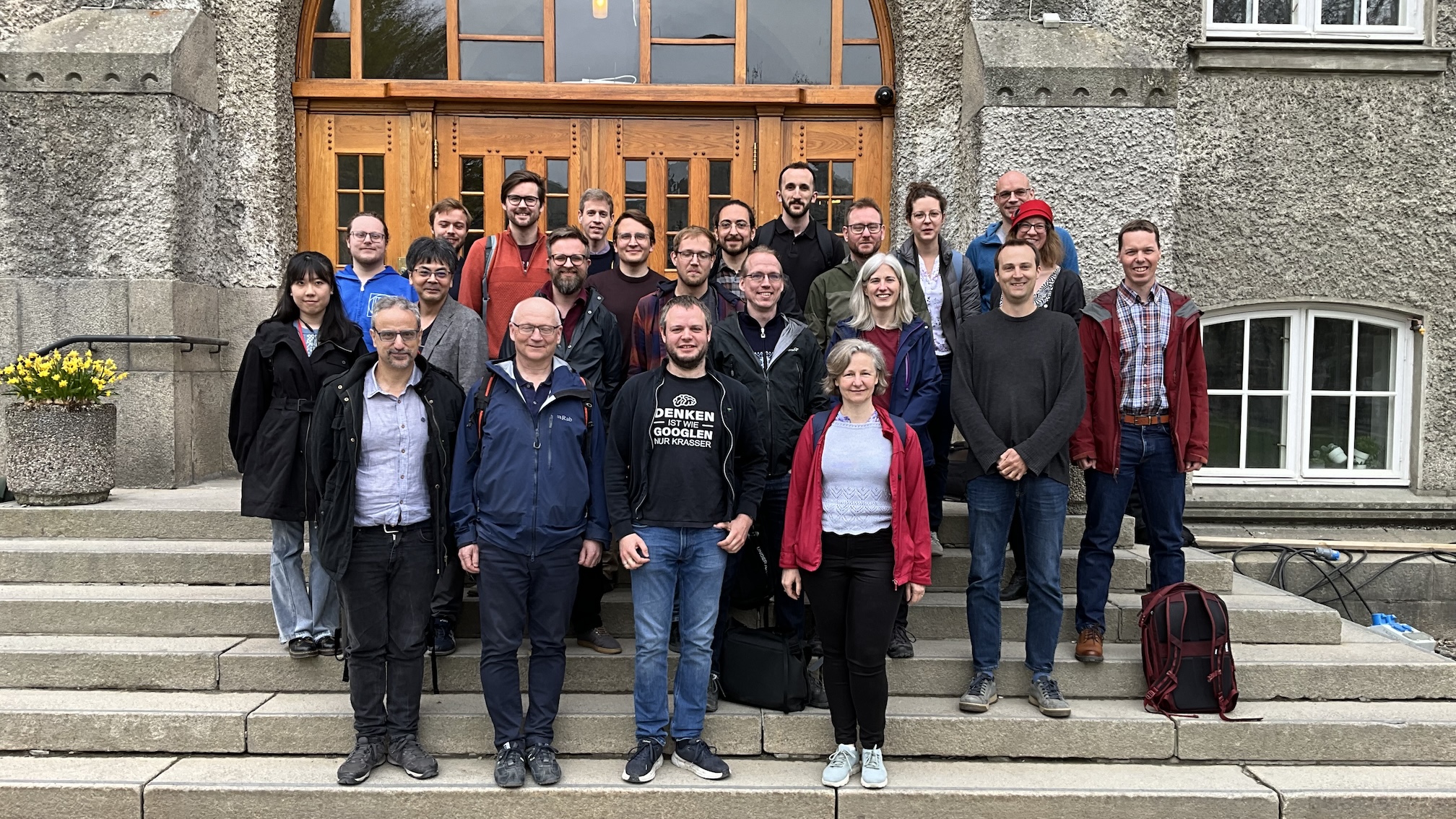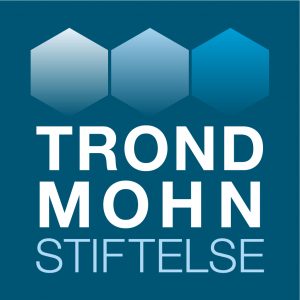Foundations of Numerical Differential Geometry

TMS Workshop on
Foundations of Numerical Differential Geometry
The central aim of the workshop is to bring together researchers from different backgrounds in geometry and applied mathematics, to discuss and advance both fields. Particular emphasis will be put on aspects of the following topics: Numerical mathematics, applied differential geometry, geometric methods for partial differential equations, and numerical methods for analysis on Lie groups and manifolds.
Invited Speakers
- Nicolas Boumal (EPFL)
- David Martin de Diego (ICMAT)
- Ana Djurdjevac (FU Berlin)
- Hanne Hardering (TU Dresden)
- Annika Lang (Chalmers University of Technology)
- Klas Modin (Chalmers University of Technology)

Schedule
All talks will be on May 7th.
Until the coffee break at 15.30 the talks will take place in room EL 1, Gamle Elekro (2nd floor), on the Gløshaugen camput. For the last talk we meet in Simastuen, Sentralbygg 2 (6th floor).
- 09:00
- Ana Djurdjevac
- 10:00
- Klas Modin
- 11:00
- short break
- 11:15
- Annika Lang
- 12.15
- Lunch break
- 13.30
- Hanne Hardering
- 14.30
- David Martin de Diego
- 15.30-16.00
- coffee break
- 16.00
- Nicolas Boumal (slides)
Discussions
On May 8th we meet from 9.00-11.00 to discuss common topics. We continue with discussions about these topics in small groups afterwards. In the afternoon we have two talks in the DNA seminar and continue with the discussions.
Talks
Abstract. We study a higher-order surface finite-element (SFEM) penalty-based discretization of the tangential surface Stokes problem. We analyze the inf-sup stability of the discrete scheme in a generic approach by lifting stable finite-element pairs known from the literature. The discretization errors depend on the best-approximation error of the finite element pairs, the choice of the penalty parameters, and the geometric errors of the surface approximation.
We discuss how this influences several different discrete formulations, and show optimal order convergence in tangential norms of an isogeometric setting that requires only geometric knowledge of the discrete surface.
Representation of random fields on hypersurfaces is important in many ap- plications such as (cell) biology, climatology and astrophysics. We will construct series expansion of isotropic Gaussian random field on a sphere with independent Gaussian coeffcients and localized basis functions. The basis functions are obtained by applying the square root of the covariance operator to spherical needlets. Localization of the resulting covariance-dependent multilevel basis is shown under decay conditions on the angular power spectrum of the random field. We will illustrate the application of such expansions to elliptic PDEs on the sphere with lognormal coe cients. In addition, we will present numerical illustrations and comment on the extension of the presented results to other surfaces, which is the work in progress. This is a joint work with M. Bachmayr.
In this talk, we will use geometric tools, in particular, Lagrangian submanifolds of symplectic manifolds and their generating functions, for deriving, in a systematic way, numerical integrators for constrained system with special attention to holonomic and nonholonomic systems, sub-Riemannian systems and finally, higher-order Lagrangian systems. The main objective is that the derived numerical methods preserve some relevant geometric structures (such as the configuration space, symplecticity, associated Poisson structures, symmetry, momentum map, constraints…).
References:
- Barbero-Liñan, M., Marrero, J.C., and Martın de Diego, D. From retraction maps to symplectic-momentum numerical integrators. arXiv: 2401.14800
- Barbero-Liñán M. and Martın de Diego, D. Retraction maps: a seed of geometric integrators. Found. Comput. Math. Volume 23, pages 1335–1380, (2023)
- Barbero-Liñán M. , Martın de Diego, D. and Sato Martín de Almagro, Rodrigo T. A new perspective on symplectic integration of constrained mechanical systems via discretization maps. arXiv:2306.06786
Abstract. Looking around us, many surfaces including the Earth are no plain Euclidean domains but special cases of Riemannian manifolds. One way of describing uncertain physical phenomena on these surfaces is via stochastic partial differential equations. In this talk, I will introduce how to compute approximations of solutions to such equations and give convergence results to characterize the quality of the approximations. Furthermore, I will show how these solutions on surfaces are a first step towards the computation of time-evolving stochastic manifolds.
Abstract. The “reversibility paradox” refers to the seeming contradiction between two major discoveries made during the end of the 19th century: the law of entropy, given by Boltzmann, and the recurrence theorem, given by Poincaré. The discourse is captured in the following question: how can reversible dynamics give rise to irreversible behavior?
In this talk, I shall discuss how the same enigma shows up in a finite-dimensional model of the 2-D incompressible Euler equations. The model, suggested by V. Zeitlin in 1991, uses quantization theory to replace the vorticity formulation of the 2-D Euler equations by an isospectral flow of matrices. This way, a spatial discretization preserving all the geometric structure is obtained. Recent advances on Zeitlin’s model propose a connection between the long-time behavior of (generic) 2-D Euler flows and integrability conditions for “blob dynamics”. A major point at issue, however, is whether simulations based on Zeitlin’s model truly reflect the dynamics of 2-D Euler. It is within this context the reversibility paradox enters.
Local Travel Information
All invited speakers traveling to Trondheim are checked in the Comfort Hotel Park located here. One of the easiest was to get to the hotel is to use Express bus “Vaernes Ekspressen“ from the Trondheim (Værnes) Airport to City Center. The trip lasts around 30-40 mins (not much longer than using a taxi). You can get a ticket on their web page cheaper than buying it directly at the bus. Just choose “To Trondheim” on the entry page and then on the search page under “Traveling to” pick “Prinsens gate”. If you plan to use the bus on your way back, select “round trip” on the same page.
The seminar room for Tuesday is mostly EL 1, Gamle Elekro (2nd floor), which is on the central campus Gløshaugen and only a relaxed 20min walk from the hotel. Alternatively, you can take buss line 3, 22, or 25 to save you 7 mins. Buss tickets for the local busses can be planned and purchased via the ATB app, see , and in general atb.no/en/ for more details.
The final talk will be streamed in Simastuen, 656, SB-II.

